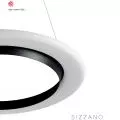The end of December is rich in the results of architectural competitions. On Monday, at a conference at the World War II Museum in Gdansk, we learned the results of the competition to develop an urban-architectural concept for a military cemetery for Polish Army Soldiers in Westerplatte. Out of 27 projects submitted, the jury awarded 3 prizes and as many as 7 honorable mentions.
The aim of the competition was to select the most favorable work constituting a concept for the Polish Army Soldiers' Cemetery at Westerplatte, which would commemorate the fallen soldiers of the Polish Army in a manner appropriate to the historical and cultural rank of the site, and at the same time provide the basis for the development of full documentation enabling the implementation of the investment. The goal of the selected concept should be to create a place of remembrance, social interaction, culture, patriotic and historical education, and a space where state, religious, and military ceremonies will be held.
announcement of competition results
© Museum of World War II
Twenty-seven projects were submitted to the competition, which were reviewed, and then evaluated, by the Competition Jury consisting of Dr. Boleslaw Stelmach (Director of NIAiU, Chairman of the Competition Jury), Pawel Vlad. Kowalski (Chairman of the Board of the Wybrzeże Branch of SARP, referee), Wojciech Augustyniak (SARP Wybrzeże Branch in Gdansk), Dr. Izabela Burda (Gdansk University of Technology), Dr. Agnieszka Gębczyńska-Janowicz (Gdansk University of Technology), Oskar Grąbczewski (OVO Grąbczewscy Architekci), Dr. Janusz Janowski (President of ZPAP), prof. Stanisław Radwański (sculptor), Igor Strzok (Pomeranian Voivodship Conservator of Monuments), Prof. Lech Tempczyk (UTP in Bydgoszcz), Prof. Stanisław Fiszer (Fiszer Atelier 41), Witold Zandfos, Marta Sękulska-Wrońska (President of the Board of Directors of SARP Warsaw), Dr. Jan Sikora (ASP Gdańsk), Andrzej M. Chołdzyński (AMC-ANDRZEJ M. CHOŁDZYŃSKI) and the honorary chapter.
The results were announced at a conference on December 21 this year at the World War II Museum in Gdansk.
As the chairman of the Competition Jury, Dr. Boleslaw Stelmach, said:
The competition was very difficult. On the one hand, it was necessary to design an intimate cemetery for the heroes of the dramatic events at Westerplatte, and on the other hand to find a form of timeless, universal commemoration that respects the fragile, authentic evidence of history: landscape, terrain, ruins, bomb craters. The submitted works should be judged as good or very good.
First prize
The Competition Jury decided that the first prize will be awarded to the project by NM architects Tomasz Marciniewicz, Zuzanna Szpocińska, Jerzy Grochulski (author team composed of Tomasz Marciniewicz, Zuzanna Szpocińska, Jerzy Grochulski, Karolina Kayzer).
The work with minimal means of expression organizes the space of the cemetery as a contemporary proposal of classical symbols. The timeless, absolute form closes the way through the forest of Westerplatte, and the stalls - burial sites, standing around the cross, symbolically unite with it. The minimal means of expression proposed in the work allow the landscape, the sky, the trees, the meadow, which are the most important carrier of memory of the drama that took place at Westerplatte, to speak. Adapting the universal geometric archetype, which draws on ancient, then Renaissance, as well as modern symbolism, to this landscape will allow the place to come to life. The deformation of the geometry, which will result from the formation of the terrain, taking into account the existing trees, will meld a timeless symbol with a space shaped by history," justified the selection by the Competition Jury.
First prize, proj.: NM architects - Tomasz Marciniewicz, Zuzanna Szpocińska, Jerzy Grochulski Karolina Kayzer
© NM architects - Tomasz Marciniewicz, Zuzanna Szpocińska, Jerzy Grochulski Karolina Kayzer
As Dr. Karol Nawrocki, director of the World War II Museum in Gdansk, said:
I am pleased with the fact that this concept was in line with our expectations [...]. It was extremely important to us that the cemetery be recognized as part of the Museum of Westerplatte and the War of 1939, that it fit into the programmatic assumptions of the entire memorial, museological concept. This has happened, and it brings great joy. We were also very keen that Westerplatte - a place that has unfortunately been crushed by the modernity of the People's Republic of Poland, the industrial modernity of the 1990s and 2000s, which has lost its historicity and spatial landscape carrying great symbolism - should not be crushed by another concept, the monumental concept of a cemetery [...].
First prize, proj.: NM architects - Tomasz Marciniewicz, Zuzanna Szpocińska, Jerzy Grochulski Karolina Kayzer
© NM architects - Tomasz Marciniewicz, Zuzanna Szpocińska, Jerzy Grochulski Karolina Kayzer
The winning author's team will be invited to negotiate a sole-source contract for the detailed development of design documentation enabling the investment.
2nd prize
The team consisting of: Piotr Pasierbiński and Duc Ngo (Japan) received the second prize. The Competition Jury appreciated the symbolic nature of the message and the ideological clarity of the commemoration of the fallen Soldiers.
Second prize, design: Piotr Pasierbiński, Duc Ngo
© Piotr Pasierbiński, Duc Ngo
The authors of the work created an original narrative of space, which culminates in a contemplative interior separated by a detached wall, taking the form of an enclosed garden. Such a solution allows for a gradual mood-building effect. It seems valuable to create an opportunity for momentary isolation and contemplation at the location of the tombstones. However, this raises doubts due to the introduction of the concrete object into the natural landscape of the battlefield [...].
Second prize, designed by Piotr Pasierbiński, Duc Ngo
© Piotr Pasierbiński, Duc Ngo
Third prize
Design team composed of: Andrzej Sołyga, Marek Kuciński, Paweł Mysera received the third prize for realizing the idea of the competition, including symbolic message and ideological legibility.
Third prize, proj.: Andrzej Sołyga, Marek Kuciński, Paweł Mysera
© Andrzej Sołyga, Marek Kuciński, Paweł Mysera
The "Forest of Crosses" proposed by the authors in the Westerplatte forest has an obvious and universal symbolic dimension. The geometry and proportions of the project's elements allow for the proper reception of this exceptionally concise and strong symbol," reads the jury's justification.
On the next page we present the awarded works.









































































































